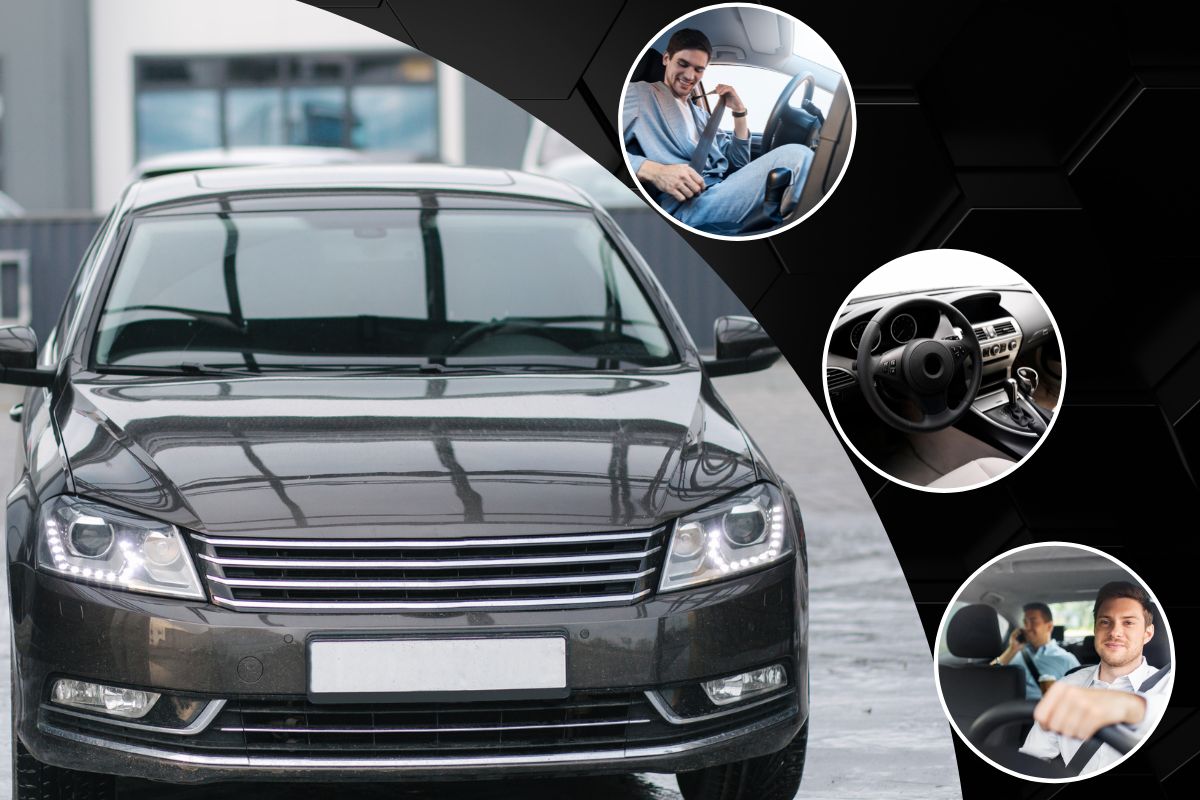The automobile business has seen substantial modifications in the last few decades due to the unrelenting pace of technological innovation. Among all the talk about electric vehicles, improved performance, and connection, one aspect stands out as a top priority for most car purchasers and drivers: safety. To protect the safety of passengers, modern automobiles have a variety of unique features. The emphasis on safety has never been more intense, from autonomous systems to fortified structures.
Car enthusiasts and buyers can visit SCA Charleston to witness the modern marvels of auto engineering. But before delving deep into car hunting, let’s understand how today’s vehicles have been designed to offer unparalleled protection to their occupants.
Table of Contents
Advanced Airbag Systems
While airbags have been around for a while, they have evolved considerably. Today’s cars don’t just have frontal airbags; they come equipped with side-impact, knee, curtain, and even seatbelt airbags. These are designed to inflate in milliseconds, offering cushioning and reducing the impact forces on the body during a collision.
Continuing this trend, sophisticated sensors linked with these advanced airbag systems can now identify the severity of an impact, seat position, and even whether seat belts are tightened. This data-driven technique allows airbags to deploy with the right force, providing the best safety in a variety of crash scenarios. Furthermore, with the introduction of multi-stage airbags, deployment can occur in stages based on the severity of the crash, boosting occupant safety and comfort during unexpected situations.
Autonomous Emergency Braking (AEB)
AEB is a leap in active safety. This system constantly monitors the vehicle’s surroundings and automatically applies the brakes when it senses an imminent collision. This not only reduces the severity of crashes but can also prevent them entirely.
Modern automobiles, which are built on the basis of AEB, use a combination of radar, cameras, and ultrasonic sensors to achieve a comprehensive 360-degree view of the environment. This holistic view enables AEB systems to distinguish between diverse impediments, such as another car, a pedestrian, or even a stray animal. In real-time, advanced algorithms process this data, calculating the optimal course of action—whether that’s coming to a complete stop, slowing down, or even swerving. Such precise decision-making highlights AEB’s potential to alter urban driving landscapes, making roadways safer for all.
Lane Departure Warning and Lane Keeping Assist
Drifting out of one’s lane can be catastrophic. These systems detect unintentional lane departure and either alert the driver or take corrective action to keep the vehicle centered, especially useful during long highway drives or moments of distraction.
The complex combination of cutting-edge technology underpins the success of these systems. They constantly scan road markings to detect the vehicle’s position within the lane, using the capabilities of high-resolution cameras. If the system detects a divergence without an indicator signal, it reacts quickly. To inform the driver, some vehicles use moderate steering adjustments, while others may use subtle braking or even haptic feedback, such as a vibrating steering wheel. This seamless integration of technology and vehicle dynamics improves the driving experience by adding reassurance and lowering the risk of lane-related incidents.
Adaptive Cruise Control
Long gone are the days when cruise control was just about maintaining a set speed. Adaptive cruise control adjusts the vehicle’s speed to maintain a safe following distance from the vehicle ahead, reducing the strain on the driver and enhancing safety.
In order to continuously scan the road ahead, adaptive cruise control uses a combination of radar and cameras. It can maintain the predetermined space by automatically decelerating or accelerating based on the speed and distance of the leading vehicle. Its capacity to perform in a variety of traffic scenarios, from free-flowing highways to congested urban environments, is particularly noteworthy. This system can even bring the car to a complete stop and resume motion without the driver’s assistance in more advanced iterations. Such developments not only improve safety but also improve driving comfort, particularly in stop-and-go traffic.
Structural Safety Enhancements
Modern cars use advanced materials like ultra-high-strength steel, aluminum, and composites to enhance rigidity while maintaining weight efficiency. The vehicle’s structure is designed to absorb impact energy, directing it away from the passenger compartment during a collision.
This strategic design is known as a “crumple zone.” It works by allowing specific sections of the vehicle to deform in a controlled manner, dispersing the force of the impact. Simultaneously, other critical parts, such as the passenger cabin, are reinforced to ensure their integrity and the safety of the people. This mix of malleability and strength is achieved through painstaking engineering, as well as numerous simulations and real-world crash tests. As a result of this perfect blending of safety and design, the vehicle’s structural integrity plays a critical role in minimizing potential damage to its passengers even in the most severe accidents.
Blind Spot Detection and Rear-View Cameras
These features alert drivers to obstacles or vehicles in blind spots. With sensors and cameras in strategic positions, drivers can navigate with enhanced awareness, reducing the risk of unseen hazards.
Furthermore, as road networks and vehicle sizes become more sophisticated, these technologies have become vital tools for daily driving. Blind-spot detection systems sometimes use ultrasonic or radar sensors to monitor regions that may not be visible in side mirrors. When a possible hazard is detected, most systems warn the driver with visual indicators like lighted icons on the side mirrors or aural alerts. Similarly, rear-view cameras provide a clear picture of the area behind the car, which is useful for duties such as parking or reversing in tight places. These improvements, when combined, act as an extra set of eyes on the road, resulting in safer moves and fewer collisions.
Pedestrian Protection and Collision Avoidance
In urban environments, ensuring the safety of pedestrians is crucial. Systems like pedestrian detection can automatically brake if someone steps in front of the vehicle, potentially preventing fatal accidents.
In addition, modern systems now use infrared sensors, cameras, and machine learning algorithms to discriminate between walkers, cyclists, and other road users. These systems can forecast potential collision pathways and take proactive action by studying movement patterns and trajectories. Some vehicles even have audible or visual alerts to notify both the driver and the pedestrian, promoting a two-tiered approach to safety. As cities become more densely populated and roads get busier, such proactive solutions will become increasingly important in lowering the number of accidents and improving the harmonious cohabitation of vehicles and people in shared places.
The developments in automotive safety demonstrate the automobile industry’s dedication to passenger safety. We may expect even more spectacular safety developments as technology advances, underscoring the need to constantly choose vehicles that emphasize the well-being of their passengers.
















